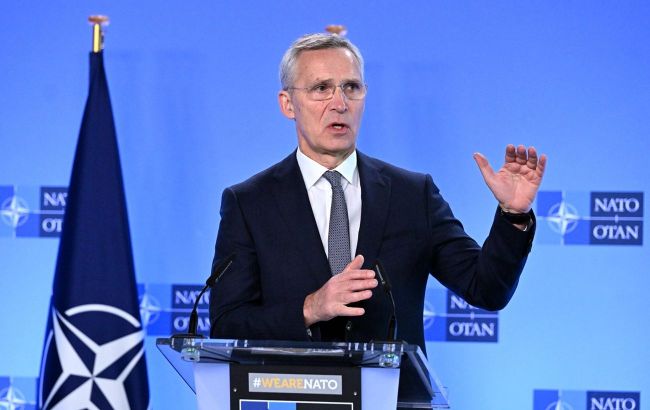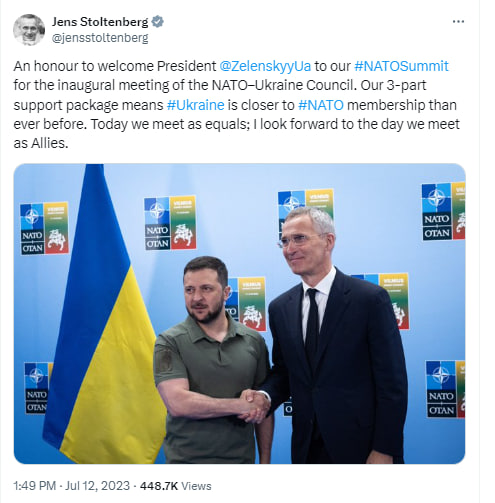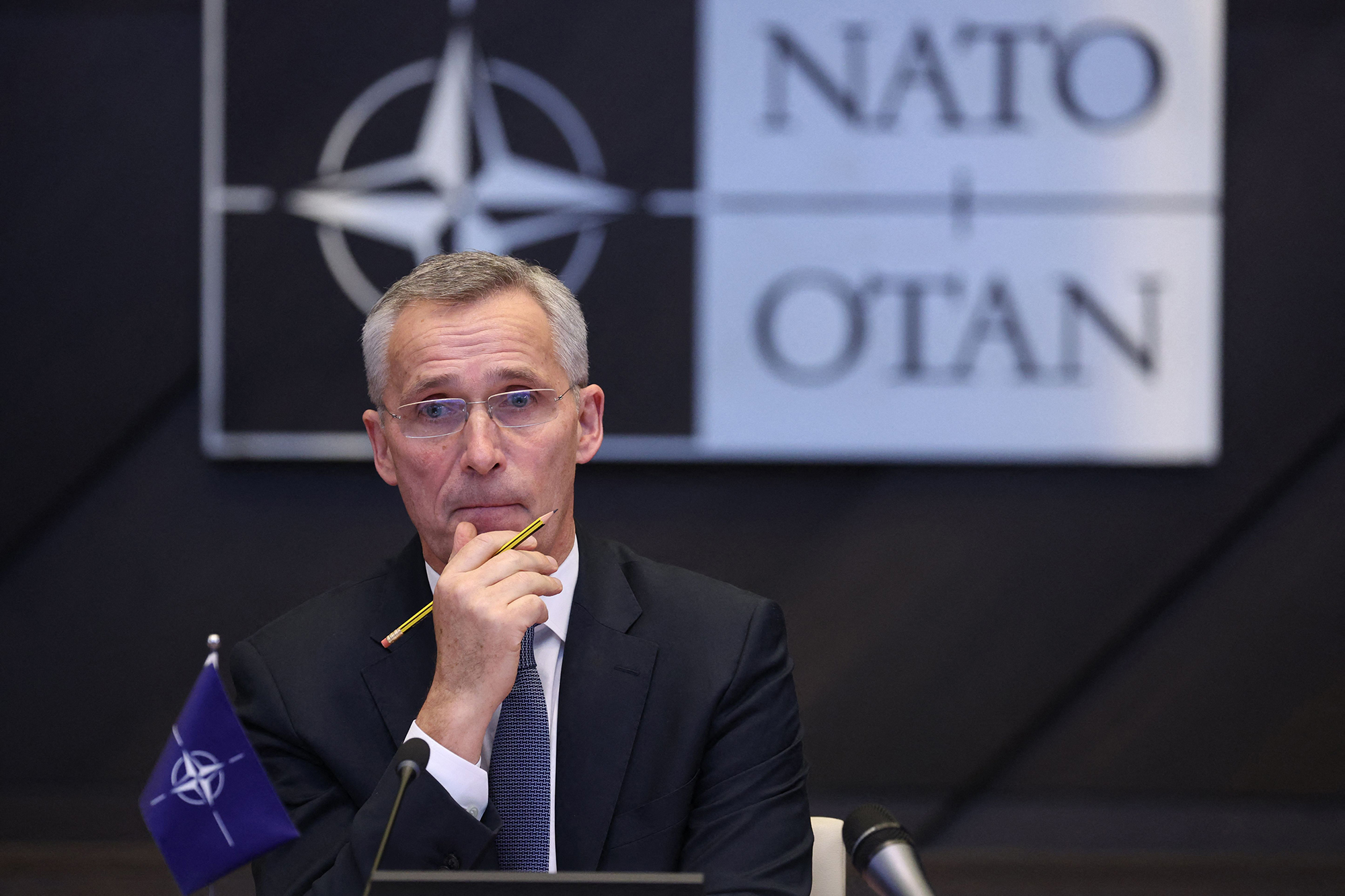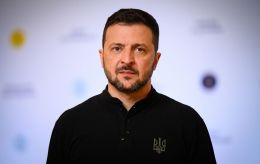After 10 years at helm of NATO. Why Jens Stoltenberg resigns and what he plans to do next
 Photo: NATO Secretary General Jens Stoltenberg (Getty Images)
Photo: NATO Secretary General Jens Stoltenberg (Getty Images)
Jens Stoltenberg is leaving NATO in early October. The Secretary General of the North Atlantic Treaty Organization can use his many years of experience in his new position, which is also related to international security.
Read more about Jens Stoltenberg, his work at NATO, and what he will do after his dismissal in RBC-Ukraine's article.
Content:
- Who is Jens Stoltenberg
- At the helm of NATO. Challenges and achievements
- Why Stoltenberg is leaving NATO
- What he plans to do next
Who is Jens Stoltenberg
Jens Stoltenberg was born in 1959 in Oslo, Norway, to a prominent political family; his father, Thorvald Stoltenberg, served as Norway's Minister of Foreign Affairs. Along with his older sister, Jens actively participated in community activities organized by the Norwegian Labour Party (NLP) from a young age.
While studying economics at the University of Oslo, Stoltenberg led the party's youth movement. He briefly worked as a journalist for the daily newspaper "Arbeiderbladet," which was affiliated with the NLP.
.jpg)
Photo: Stoltenberg worked for the Norwegian government (Getty Images)
In 1993, he became a member of the Norwegian Parliament and was appointed Minister of Industry and Energy that same year, later serving as Minister of Finance from 1996 to 1997.
In 2002, Stoltenberg became the leader of the Norwegian Labour Party. He served as Prime Minister of Norway twice (2000–2001 and 2005–2013).
At the helm of NATO. Challenges and achievements
In 2014, Jens Stoltenberg succeeded Anders Fogh Rasmussen as the head of NATO, becoming the first Secretary General of the North Atlantic Alliance from Norway.
Stoltenberg's leadership occurred against the backdrop of escalating global security challenges, particularly due to Russian aggression that began with the annexation of Crimea and evolved into a full-scale war, rising tensions with China, and conflicts in the Middle East.
- Support for Ukraine
The war in Ukraine has been the most significant challenge for Stoltenberg during his tenure. In one of his interviews, the NATO Secretary General remarked that February 24, 2022, when Russia launched its large-scale invasion of Ukraine, marked the worst day of his leadership.
He also noted that the Alliance could have done more to prevent Russia's full-scale invasion.
"I regret that NATO allies and NATO itself did not do more to strengthen Ukraine earlier," said Stoltenberg, adding that if Ukraine had been militarily stronger, “the threshold for attack would have been higher for Russia.”
The NATO Secretary General actively worked to increase military assistance to Ukraine and organize military training.
He urged allies to provide more modern weaponry to the Armed Forces of Ukraine (AFU), including air defense systems, tanks, and munitions. Stoltenberg also welcomed discussions among the UK, the US, and other Alliance members regarding granting the AFU permission to strike deep into Russia with long-range missiles, emphasizing that decisions should be made at the level of individual allies.
Stoltenberg repeatedly underscored that Ukraine is on an "irreversible path to NATO."
Under his leadership, the Vilnius Summit in 2023 decided on Ukraine's future accession to the Alliance without fulfilling the Membership Action Plan (MAP). The summit also established the Ukraine-NATO Council, enhancing Ukraine's integration into the Alliance and allowing for decision-making on equal terms.

Screenshot from x.com/jensstoltenberg
"First, we shortened your path to NATO from two to one step by removing the requirement for a Membership Action Plan. Second, we agreed on a program to make Ukraine’s forces fully interoperable with your future Allies. Third, we strengthened our political ties to an unprecedented level, by establishing the NATO-Ukraine Council – a body where we can consult and make decisions together. These three decisions mean that Ukraine is now closer to NATO than ever before," Stoltenberg stated at the Vilnius Summit.
- Enhancing NATO's defense capabilities
In the context of global security challenges, Stoltenberg initiated NATO modernization programs, emphasizing new threats such as terrorism and cyber threats.
He advocated for increased defense spending, resulting in member countries committing to invest at least 2% of their GDP in defense programs, while NATO's collective budget was doubled to ensure the effective implementation of its decisions and tasks.
To deter Russian aggression, Stoltenberg facilitated the strengthening of NATO's eastern flank, which included increasing military presence in the Baltic states and Poland.
- Alliance expansion
During Stoltenberg's leadership, NATO expanded to include new members: Montenegro, North Macedonia, Finland, and Sweden.
Why Stoltenberg is leaving NATO
Jens Stoltenberg will leave the position of NATO Secretary General exactly ten years after his appointment. He is the second longest-serving head of the North Atlantic Alliance, following Joseph Luns (1971–1984).
According to the organization's statute, NATO's Secretary General is appointed by the governments of member countries for an initial term of four years, which may be extended by mutual agreement.

Photo: Stoltenberg leaves NATO at the end of his term (Getty Images)
This was the case with Stoltenberg:
- In 2017, allies decided to extend his term until the end of September 2020;
- In 2019, this date was postponed to September 2022;
- The full-scale war in Ukraine prompted another extension to September 2023;
- In 2023, Stoltenberg's term was extended for one last year.
In June 2024, NATO members elected Dutch Prime Minister Mark Rutte as the new Secretary General. He will assume the position immediately after Jens Stoltenberg's term concludes on October 1.
What he plans to do next
In 2022, the Norwegian government announced that Jens Stoltenberg would head the country’s central bank after his tenure at NATO; however, his mandate was extended again.
Currently, Western media report that following his departure from the North Atlantic Alliance, Stoltenberg will likely take over as head of the Munich Security Conference (MSC).
According to a Reuters source, it is expected that Jens Stoltenberg will assume this role following the next conference in February 2025. For the first time since its founding, MSC may be led by someone who is not a German citizen. He will succeed Christoph Heusgen, who has chaired the conference since 2022.

Photo: Stoltenberg may lead MSC (x.com/jensstoltenberg)
As reported by the German publication RND, the Munich Security Conference Foundation Council is preparing this decision. Additionally, MSC President Wolfgang Ischinger has described Stoltenberg's candidacy as "incomparably best choice."
Stoltenberg’s experience at NATO will be valuable in his new role, as the Munich Security Conference serves as a significant platform that annually gathers politicians, military leaders, experts, business representatives, and civil society members from around the world to discuss international security issues.
However, Stoltenberg himself has declined to confirm his potential appointment to the MSC after leaving NATO. In a recent interview with FAZ, he mentioned that he has many options and plans to reside in Oslo.
Sources: Jens Stoltenberg's interview with FAZ, Politico, RND, information from the NATO portal, and Stoltenberg's posts on the social network X.

